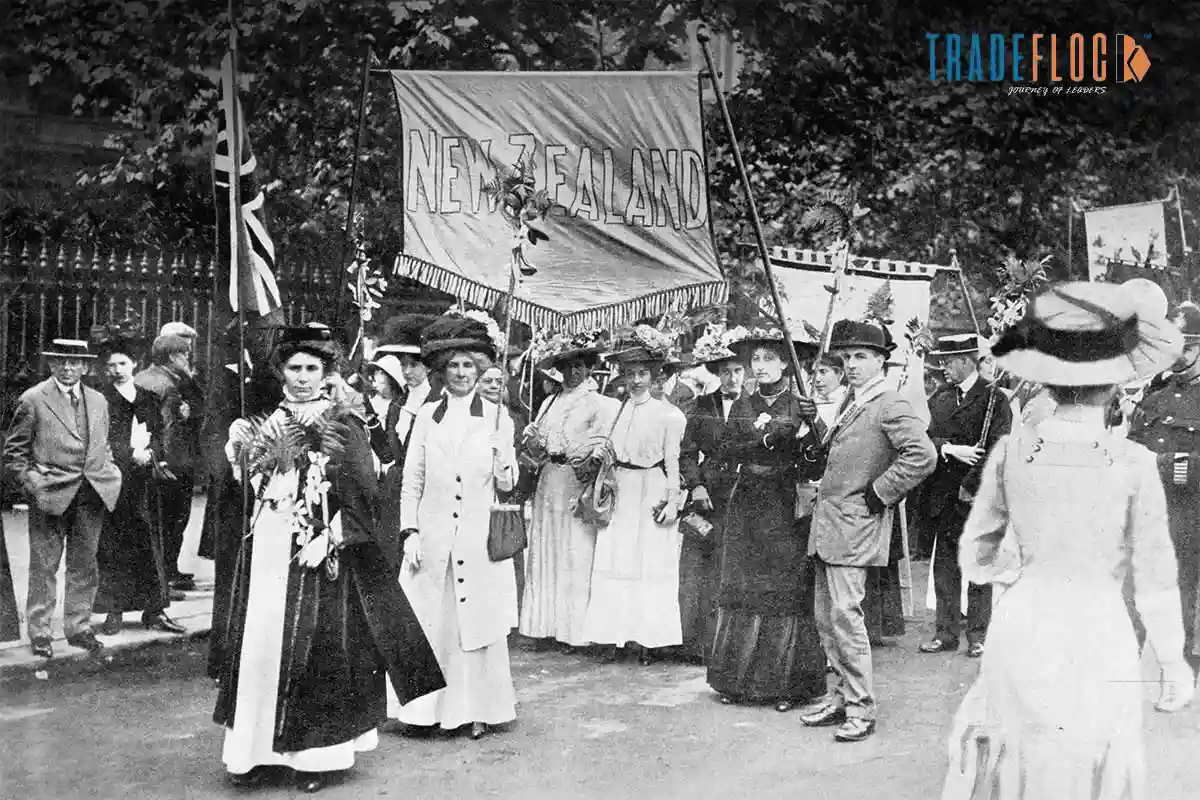On September 19, 1893, the small island nation of New Zealand provided the world with the first example of granting women the right to vote in parliamentary elections to choose their laws. The case not only transformed the country’s approach to democracy but also sparked a new wave of inspiration for the suffrage movement worldwide. It was the result of relentless advocacy, vocal public support, and progressive political leadership, which laid the foundation for gender parity in politics.
Table of Contents
The Road to Suffrage: A Global Struggle
By the end of the 19th century, women’s rights became a global issue. In Europe and North America, suffragists campaigned for equal citizens, but traditional norms and patriarchal systems persisted. Women were largely confined to domestic roles, with limited political influence. Meanwhile, New Zealand emerged as a pioneer, being more open to political change due to its limited democratic influence. As land, labor, and power issues grew, suffrage became important. There, women’s movements, religious groups, advocacy efforts, and reform-minded politicians formed key relationships.
Kate Sheppard and the Women’s Suffrage Movement
Kate Sheppard led the fight for women’s rights in New Zealand. As president of the Women’s Christian Temperance Union (WCTU), she campaigned for political change, believing women’s voting rights would create a more moral society by addressing alcohol, poverty, and education issues. Sheppard and supporters organized a grassroots crusade, producing petitions, publishing articles, giving speeches, and rallying women nationwide. In 1893, they submitted a petition with nearly 32000 signatures, a significant number in a country of about 700000 people. The petition was displayed in parliament, illustrating the demand for justice.
Political Argument
Despite the strong support, there were still opponents, as there was powerful opposition against the suffrage movement. Opponents argued that women were ill-equipped (due to being too emotional or lacking experience) to participate in politics. Others claimed that suffrage would disrupt family units because it would remove women from their natural roles. Some opponents, including many brewers, were concerned that women would bolster the temperance movement and lead to increased regulation of alcohol. The controversy continued for years in the New Zealand parliament. Several suffrage bills were introduced and defeated multiple times before finally passing in 1893. Political maneuvers, alliances, and public pressure gradually weakened the opposition amid a changing political climate.
The Historic Law of 1893
The Electoral Act of 1893 was signed by Governor Lord Glasgow on September 19, 1893, allowing voters to participate in parliamentary elections; this provision directly led to women gaining the right to vote. It applied to all women aged 21 or older, regardless of property ownership, making it more progressive than most male suffrage laws of the time. The change was immediate and life-changing. Just ten weeks later, in November 1893, women in New Zealand used their votes in a general election. Despite logistical challenges, such as long travel distances, the mobilization of thousands of women to vote was remarkable, with almost two-thirds of eligible women participating.
A Global Ripple Effect
The move by New Zealand shocked the rest of the world. At a time when women in Britain, the U.S., and other democracies were fighting for recognition, this small colony set an example that a woman could be chosen as a political leader. Australia was another country in 1902 with partial suffrage, although with some racial restrictions, and Finland became the first European nation to grant full voting rights to women in 1906. Equal voting rights were not achieved in the United States until 1920 (the 19th Amendment), and Britain followed suit only in 1928. The successful example of New Zealand’s leadership demonstrated that, even amid opposition, progressive change is possible through persistence and public support.
The Heritage of the Reform of 1893
Today, New Zealand celebrates the victory in suffrage as a major step in democratic history. Kate Sheppard appears on the 10-dollar banknote, symbolizing her lasting legacy. Statues, schools, and other sites honor women’s justice efforts. The reform also reshaped political culture; women participated and aimed to hold office. In 1933, Elizabeth McCombs became the first female MP. Later, women like Dame Jenny Shipley (1997), Helen Clark (1999), and Jacinda Ardern achieved leadership roles, gaining international recognition. The 1893 reform didn’t eliminate all inequalities that Māori women, in particular, faced under colonialism, but it laid the groundwork for future advancements in gender rights.
A Step Changing the World
The events of September 19, 1893, were not just a legislative milestone but also a symbol of hope and change. New Zealand showed that democracy could be extended to women, serving as an example to the world. The key role of Kate Sheppard and the suffragists, along with their willingness to endure a long struggle against strong opposition through persistence, proved that progress is possible. More than a century later, this accomplishment continues to serve as a testament that positive change often begins with small, brave countries that dare to act while others wait. It was not only on that day that New Zealand granted women the right to vote but also introduced a new vision of democracy to the entire world.






